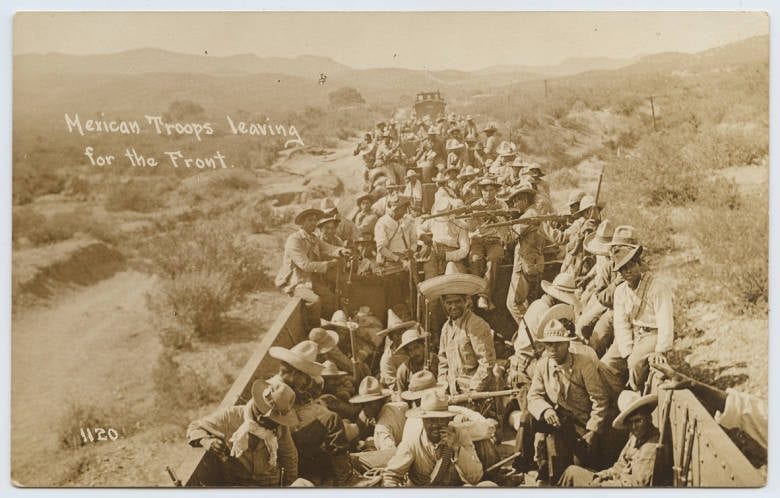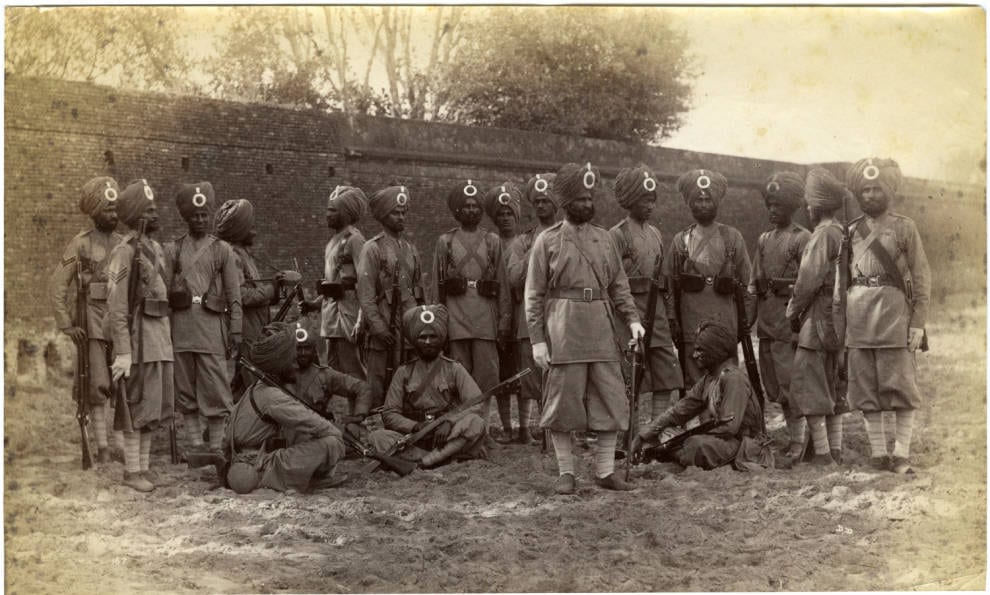SOURCE: http://digitalcollections.smu.edu/cdm/ref/collection/eaa/id/3
When one learns about the enormous importance of Indian soldiers to the British Empire it makes sense why at the outset, Indians felt that they ought to be considered as equal citizens under the crown, as seen in the movie Gandhi. In a sense while the British Empire was ruled by the British and dominated by the English, a vast amount of the economic contributions to the empire came from India. Indians bled and died for the empire and so it makes sense that at the beginning the Indians felt that the empire was theirs as much as it belonged to the British.
Immediately the uniform, and particularly the headdress, stands out in the picture from the British Indian Army. In comparison, the Mexican Army from roughly the same time period has a uniform that appears much more European. This is striking because India was still a colony of the British Empire while Mexico was not. The differences in just the uniform appears to suggest that British domination of Indian culture was far less complete than Spanish domination of culture in Mexico. The soldiers in the picture appear to be relaxed, as some are resting on the ground and others are having a conversation with one another. The high walls in the background give the impression that the soldiers may be in a fortified compound. Upon seeing this picture, one must wonder whether the Indian Army felt a greater allegiance to the Queen and the Empire, or their own countrymen and women. Was it common for the soldiers to hold subversive attitudes? Was participation in the army generally voluntary or was some coercion involved?
Another big question this raises is that there must have been some nationalists, even if the idea was not mainstream amongst the elites always, and they must have realized that the massive Indian Army may be able to expel the small number of British in the subcontinent by force, so why were there not other massive fights for independence before 1947 other than the 1857 uprising? Even after nationalist sentiment has developed in the later on, surely it would have occurred to some that a fight for independence may have been a faster, if much bloodier, route to freedom? Incidents like the Amritsar Massacre depicted in Gandhi where Indian soldiers coldly shot their countrymen at the order given by Colonel Dyer begs the question why the Indian armed forces, even after considering the 1857 uprising, as they were for the next ninety years.


